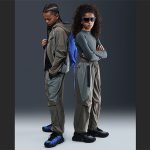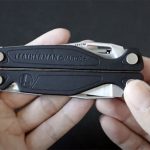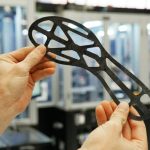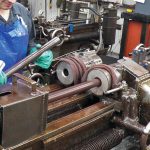Brooks Sports, Inc. announced partnerships with Prof. Dr. Gert-Peter Bruggemann and Prof. Dr. Joseph Hamill, two of the world’s leading running biomechanics researchers. Both Hamill and Bruggemann will join forces with Brooks award-winning footwear team to conduct large retrospective and prospective studies, each intended to garner information that will influence footwear design. Brooks and its partners will also be studying large populations of runners to enhance the team’s knowledge of running motion, and to better determine the individual footwear needs of different types of runners.
With more than 20 years experience each conducting running and footwear research, Bruggemann and Hamill share Brooks motivation and focus on running-injury prevention and its relationship to footwear. During their robust careers, both researchers have published more than 200 journal articles on human motion, biomechanics, running, injury prevention and footwear, and performance enhancement.
“We are extremely thrilled to collaborate with these two distinguished researchers. Augmenting our internal biomechanical expertise, Bruggemann and Hamill will deliver insights that help us create better and even more innovative running shoes,” said Brooks Director of Footwear Merchandising Andre Kriwet. “Although many running injuries stem from training errors, we want to learn more about and minimize the injury risk factors that Brooks can control through better footwear design, materials, and engineering.”
Bruggemann directs the Institute of Biomechanics and Orthopaedics at the German Sport University in Cologne, Germany, where he also serves as a professor of biomechanics. His university role gives him the unique opportunity to work with an exceptionally large pool of subjects, since all students are athletes and/or studying for a degree related to athletics.
In general, Bruggemann’s focus centers on the mechanical loading of biological tissue in sport and exercise, and the influence of technical devices to the tissue loading in sport, exercise, and daily life activities. As such, footwear biomechanics plays an important role in his scientific work. Bruggemann is also very focused on natural motion – allowing our joints and muscles to work the way our bodies intend them to – and having footwear assist in this natural movement. Even more specific to the sport of running, in recent years Bruggemann studied more minimal running shoes and their ability to strengthen the foot’s intrinsic muscles while running.
“I am excited to partner with Brooks, a company clearly dedicated to using biomechanics as the basis for all great footwear design,” said Bruggemann. “Because Brooks will involve my research team during the entire footwear process, I hope to influence shoe design based on runners specific biomechanical needs, rather than simply providing data for shoes that have already been developed.”
Hamill currently serves as a professor in the Department of Kinesiology at the University of Massachusetts Amherst. While working with the running industry, Hamill has conducted multiple large prospective running studies examining tibial stress fractures and knee injuries. Other studies focused on enhancing the knowledge of why people run differently, and understanding how footwear is involved in this process. He is particularly concerned with modeling the lower extremity in an attempt to better understand how humans optimize motion during running.
“I look forward to working with Brooks on several long-term retrospective and prospective studies focused on the connection between running injury prevention and performance footwear,” said Hamill. “No other brand is as dedicated as Brooks to understanding the way our bodies are intended to work and harnessing that knowledge to inspire smart design of footwear runners need and want.”
Supplementing Brooks internal Biomechanics Research Lab capabilities, both Hamill and Bruggemann have established labs at their respective universities with state-of-the-art motion analysis, extensive 3D running biomechanical analysis, and the ability to measure muscle activity and energy consumption along with motion and forces. They also employ state-of-the art computer modeling capabilities and use these models to expand knowledge relative to the design effects of footwear.
Both researchers will initiate their partnerships with Brooks this month.















